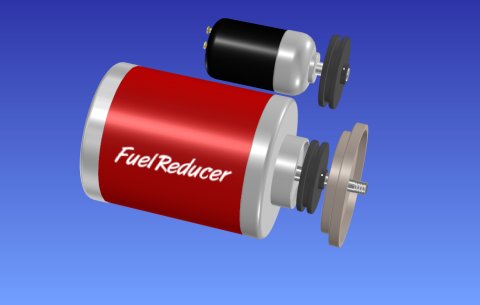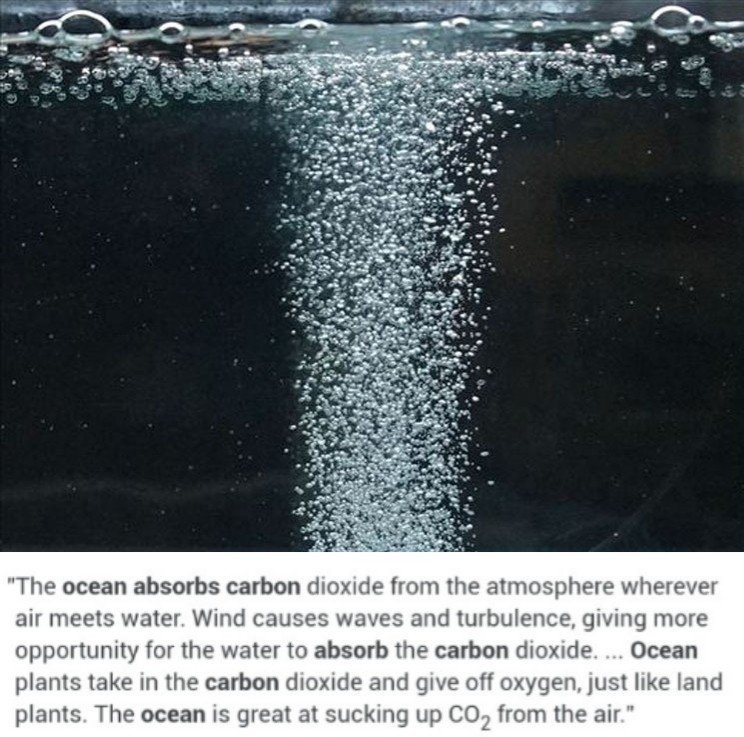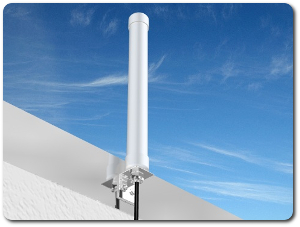Drive-charge electric motor will allow electric cars to travel farther than gasoline cars, without stopping to recharge and cost $0.00
World news Wednesday, April 11th, 2012
The number of people who are now converting their gasoline fueled vehicles to electric is growing steadily. Not just in Canada but around the World. The rate of conversion from gas to electric would grow astronomically but the main stumbling block is mileage. The drive-charge ™ electric motor concept is the solution to the electric car’s low mileage problem.
The drive-charge ™ electric motor concept can eliminate our fanatic dependency on oil. It will make electric cars cheaper to make and it will allow electric cars to travel farther than gasoline cars. Impossible!
Gasoline vehicles are limited to the distance they can travel too. The limit is predetermined by the amount of fuel in the gas tank. Like electric cars with batteries once that juice runs out the vehicle can go no further. Gasoline vehicles need to be refueled every x number of miles. Electric cars today need to be recharged every x number of miles. But the good news for electric cars is the drive-charge ™ electric motor. This motor not only gives the electric car motion is also recharges the battery while you drive. So long as the electric motor is running the motor will continuously and simultaneously recharge the vehicle’s battery.
So where can a person get their hands on a drive-charge ™ electric motor. Anywhere they sell electric motors that can be used to power electric vehicles. Never seen one. That is because you can convert any electric motor sold today into a drive-charge ™ electric motor. The drive charge electric motor can be easily made. The whole concept of the motor is making use of the electric motor shaft to perform 2 functions simultaneously – 1) provide drive and 2) recharge the 12 volt DC battery.
The difference between a regular electric motor and a drive-charge ™ electric motor is an added pulley. The added pulley provides the mechanism (rigid bodies connected by joints in order to accomplish a desired force and/or motion transmission) needed to simultaneously and continuously recharge the battery.
As shown in the design by FuelReducer.com (image above) to demonstrate the concept of the drive-charge ™ electric motor, a pulley (standard mass produced automotive pulley) can be attached to the existing single shaft of an electric motor before it is coupled with the vehicle’s transmission.
Simply by adding a pulley to the shaft of an already mass produced electric motor you are converting a standard electric motor into a drive-charge ™ electric motor. After you install your drive-charge ™ electric motor into your vehicle you need to mount another mass produced electrical automotive component – an alternator. The alternator has to be mounted so that its own pulley lines up with the pulley of the drive-charge ™ electric motor and close enough (not touching) to connect the 2 with a serpentine belt.
How does it work? When you turn on the drive-charge ™ electric motor the motor’s shaft will start to turn. As it turns (the electrical motor’s shaft) it simultaneously turns the pulley attached to the shaft. When the pulley turns it causes the pulley on the battery recharging electrical component called the alternator to turn. When the alternator pulley turns it causes the shaft to which it is attached to turn simultaneously. As the alternator shaft turns it creates electrical current which is then feed through diodes and the diodes convert the AC (alternating current) to DC (direct or one-way flowing current) which is used to recharge the battery. So long as the drive-charge ™ electric motor is running and the pulleys are turning the motor will keep on recharging the battery – perpetually. That being the case the drive-charge ™ electric motor can also accurately be called a perpetual motor – a machine that provides perpetual motion.
All gasoline engines have alternators. The alternator in gasoline vehicles recharges the battery as you drive. But in a gasoline vehicle once the fuel runs out the car stops and can go no further. When the gasoline engine stops so does the recharging of the battery. If this happens in the middle of nowhere either you sit tight and wait for someone to bring you more fuel or you are forced to walk in search of more fuel. The alternator in an electric car also recharges the battery as you drive. Because the battery is the source of fuel for electric cars and the alternator is constantly and continuously recharging the battery you would essentially never run of of fuel. The only time you would need to stop is to rest or when you have reached your destination. The only time the electric car would stop recharging the battery is when you turned off the electric drive-charge ™ motor or the alternator failed or the serpentine belt broke. This is how electric cars can travel many times farther than gasoline cars with a drive-charge electric motors. This is how electric cars will replace gasoline cars and get the World off the toxic, polluting and cancer causing oil.
Short URL: https://presscore.ca/news/?p=3670


 The Halifax International Security Forum was founded in 2009 as a propaganda program within the German Marshall Fund (founded June 5, 1972 by West German Chancellor Willy Brandt) by the Crown in Canada using Crown Corp ACOA & DND funds. The Halifax International Security Forum is a front that is used to recruit top US, UK and Canadian gov and military officials as double agents for Canada's WWI, WWII enemy and wage new Vatican Germany Cold War.
High Treason: s.46 (1) Every one commits high treason who, in Canada (c) assists an enemy at war with Canada, ..., whether or not a state of war exists". Every one who, in Canada assists Canada's enemies wage "piecemeal WWIII" Cold War by organizing, funding and participating in the Germany government politically and militarily benefitting / lead Halifax International Security Forum is committing high treason.
The Halifax International Security Forum was founded in 2009 as a propaganda program within the German Marshall Fund (founded June 5, 1972 by West German Chancellor Willy Brandt) by the Crown in Canada using Crown Corp ACOA & DND funds. The Halifax International Security Forum is a front that is used to recruit top US, UK and Canadian gov and military officials as double agents for Canada's WWI, WWII enemy and wage new Vatican Germany Cold War.
High Treason: s.46 (1) Every one commits high treason who, in Canada (c) assists an enemy at war with Canada, ..., whether or not a state of war exists". Every one who, in Canada assists Canada's enemies wage "piecemeal WWIII" Cold War by organizing, funding and participating in the Germany government politically and militarily benefitting / lead Halifax International Security Forum is committing high treason.
 Please take a moment to sign a petition to
Please take a moment to sign a petition to 









































 1917 Code of Canon Law, Canon 185 invalidates (voids) all papacies since October 26, 1958 due to the fact Cardinal Giuseppe Siri was elected Pope on the Third ballot on Oct 26 1958 but the new Pope Gregory XVII was illegally prevented from assuming the office. A Pope was elected on October 26, 1958. Thousands of people witnessed a new Pope being elected by seeing white smoke and millions were informed by Vatican radio broadcasts beginning at 6:00 PM Rome time on October 26, 1958. The papacy of Francis, Benedict, John Paul II, John Paul I, Paul VI, John XXIII and any and all of their respective doctrines, bulls, letter patents and the Second Vatican Council are all invalidated (having no force, binding power, or validity) by Canon 185 because the 1958 conclave of cardinals elected Cardinal Giuseppe Siri Pope on Oct 26 1958. Cardinal Giuseppe Siri accepted the papacy by taking the name Pope Gregory XVII but was illegally prevented from assuming his elected office.. According to Canon 185 Cardinal Angelo Giuseppe Roncalli illegally assumed the papacy 2 days later by fraud and grave fear, unjustly inflicted against Cardinal Giuseppe Siri who was lawfully elected Pope Gregory XVII. Because no Pope has been lawfully elected since October 26, 1958 the Holy See (la Santa Sede/Seat) remains vacant.
1917 Code of Canon Law, Canon 185 invalidates (voids) all papacies since October 26, 1958 due to the fact Cardinal Giuseppe Siri was elected Pope on the Third ballot on Oct 26 1958 but the new Pope Gregory XVII was illegally prevented from assuming the office. A Pope was elected on October 26, 1958. Thousands of people witnessed a new Pope being elected by seeing white smoke and millions were informed by Vatican radio broadcasts beginning at 6:00 PM Rome time on October 26, 1958. The papacy of Francis, Benedict, John Paul II, John Paul I, Paul VI, John XXIII and any and all of their respective doctrines, bulls, letter patents and the Second Vatican Council are all invalidated (having no force, binding power, or validity) by Canon 185 because the 1958 conclave of cardinals elected Cardinal Giuseppe Siri Pope on Oct 26 1958. Cardinal Giuseppe Siri accepted the papacy by taking the name Pope Gregory XVII but was illegally prevented from assuming his elected office.. According to Canon 185 Cardinal Angelo Giuseppe Roncalli illegally assumed the papacy 2 days later by fraud and grave fear, unjustly inflicted against Cardinal Giuseppe Siri who was lawfully elected Pope Gregory XVII. Because no Pope has been lawfully elected since October 26, 1958 the Holy See (la Santa Sede/Seat) remains vacant.
 Hold the Crown (alias for temporal authority of the reigning Pope), the Crown appointed Governor General of Canada David Lloyd Johnston, the Crown's Prime Minister (servant) Stephen Joseph Harper, the Crown's Minister of Justice and Attorney General Peter Gordon MacKay and the Crown's traitorous military RCMP force, accountable for their crimes of treason and high treason against Canada and acts preparatory thereto. The indictment charges that they, on and thereafter the 22nd day of October in the year 2014, at Parliament in the City of Ottawa in the Region of Ontario did, use force and violence, via the staged false flag Exercise Determined Dragon 14, for the purpose of overthrowing and besieging the government of Canada contrary to Section 46 of the Criminal Code. In a society governed by the rule of law, the government and its officials and agents are subject to and held accountable under the law. Sign the online
Hold the Crown (alias for temporal authority of the reigning Pope), the Crown appointed Governor General of Canada David Lloyd Johnston, the Crown's Prime Minister (servant) Stephen Joseph Harper, the Crown's Minister of Justice and Attorney General Peter Gordon MacKay and the Crown's traitorous military RCMP force, accountable for their crimes of treason and high treason against Canada and acts preparatory thereto. The indictment charges that they, on and thereafter the 22nd day of October in the year 2014, at Parliament in the City of Ottawa in the Region of Ontario did, use force and violence, via the staged false flag Exercise Determined Dragon 14, for the purpose of overthrowing and besieging the government of Canada contrary to Section 46 of the Criminal Code. In a society governed by the rule of law, the government and its officials and agents are subject to and held accountable under the law. Sign the online  Two of the most obvious signs of a dictatorship in Canada is traitorous Stephen Harper flying around in a "military aircraft" and using Canadian Special Forces "military" personnel from JTF2 and personnel from the Crown's traitorous martial law "military" RCMP force as his personal bodyguards.
Two of the most obvious signs of a dictatorship in Canada is traitorous Stephen Harper flying around in a "military aircraft" and using Canadian Special Forces "military" personnel from JTF2 and personnel from the Crown's traitorous martial law "military" RCMP force as his personal bodyguards.





































Electrolysis of water is the decomposition of water (H2O) into oxygen (O2) and hydrogen gas (H2) due to an electric current being passed through the water. Electrolysis of water actually begins using a minimum of 1.2 volts and the production of hydrogen gas (a fuel) will increase in rate as the voltage is increased. Typically, the electrolysis is carried out around 6 volts.
Simple electrolysis of water video. 5.5 Watts solar panel used to split water into hydrogen and oxygen gas.
Automotive lead-acid type batteries, and are made of six galvanic cells in series to provide a 12 volt system. Each cell provides 2.1 volts for a total of 12.6 volt at full charge. That being said each individual cell of a lead-acid automotive battery has enough voltage to start producing hydrogen gas – electrolysis of water will begin around a minimum of 1.2 volts – each cell provides 2.1 volts.
If you take a gallon of water, and separate it into hydrogen and oxygen by way of electrolysis you can produce 5052.7 liters of hydrogen, or 1334.8 US gallons,
Any lead-acid battery system when overcharged >14.34 Volts will produce hydrogen gas by electrolysis of the water that is in every automotive battery. If the rate of overcharge is small, the vents of each cell allows the dissipation of the produced hydrogen gas. However, if you consistently overcharge or if ventilation is inadequate, or the battery is faulty, a flammable concentration of hydrogen may remain in the cell or in the battery enclosure. Any internal spark can cause a hydrogen and oxygen explosion, which will damage the battery and its surroundings and which will disperse acid into the surroundings.
Already knew that. But did you know that this above notation is telling us that the electrolysis of the water produces flammable concentration of hydrogen gas – or essentially a fuel. They are telling us how to produce a flammable fuel (hydrogen gas) using water. They even tell us the voltage required to produce hydrogen gas from water. A voltage > 14.34 Volts will produce hydrogen gas. That being said, you now know how to produce your own “free” hydrogen fuel. How is it free? You can collect water freely using a rain barrel and have the rain water from your roof drain into it. Whenever you need more hydrogen gas producing water you take it from the rain barrel apply a voltage > 14.34 volts and feed the produced hydrogen gas into a gas generator, gas stove, gas fireplace or gas combustion automotive engine.
The alternator, found in the engine compartment of every gasoline and diesel engine vehicle, is an electromechanical device that converts mechanical energy to electrical energy in the form of alternating current.
Alternators are used in modern automobiles to charge the battery and to power the electrical system when its engine is running. Until the 1960s, automobiles used DC dynamo generators with commutators. With the availability of affordable silicon diode rectifiers, alternators were used instead. Alternators have several advantages over direct-current generators. They are lighter, cheaper and more rugged. They use slip rings providing greatly extended brush life over a commutator. The brushes in an alternator carry only excitation current, a small fraction of the current carried by the brushes of a DC generator, which carry the generator’s entire output. A set of rectifiers (diode bridge) is required to convert AC to DC. To provide direct current with low ripple, a three-phase winding is used and the pole-pieces of the rotor are shaped (claw-pole) to produce a waveform similar to a square wave instead of a sinusoid. Automotive alternators are usually belt driven at 2-3 times crankshaft speed. The alternator runs at various RPM (which varies the frequency) since it is driven by the engine. This is not a problem because the alternating current is rectified to direct current (DC) – the power that comes from a car battery.
Automotive alternators require a voltage regulator (essentially provides a fixed voltage of typically 13.8 to 14.4 volts) which operates by modulating the small field current in order to produce a constant voltage at the battery terminals. Early designs (c.1960s-1970s) used a discrete device mounted elsewhere in the vehicle. Intermediate designs (c.1970s-1990s) incorporated the voltage regulator into the alternator housing. Modern designs do away with the voltage regulator altogether; voltage regulation is now a function of the electronic control unit (ECU).
The drive charge electric motor concept could also be applied to electrical power generation by replacing the gas motor of a gas generator with a drive charge motor. A gas generator uses gas to turn the rotor inside a stator to create high voltage electrical power. Connecting the drive shaft of the drive charge motor to the rotor rod will do the very same job as the gas motor does.
See for yourself at http://en.wikipedia.org/wiki/Stator It states “The stator is the stationary part of a rotor system, found in an electric generator, electric motor and biological rotors.” – emphasis on “found in an electric generator”.
So how would it work? You would need a 12 volt car battery, a power inverter, an alternator (used today World wide to recharge car batteries), a pulley to attach to the alternator if one isn’t already attached), a pulley belt (to join the drive charge motor to the alternator), a drive charge motor, a stripped down gas generator and some appropriate wiring.
Connect the fully charged 12 volt car battery (DC) to the power inverter (you can buy one at any Canadian Tire or Home Depot). Connect the drive charge motor to the power inverter (to supply electrical power to the drive charge motor). Attach a pulley to the alternator securely mounted on top of the drive charge motor (as shown in this article’s picture by FuelReducer.com). Connect the drive rod of the drive charge electric motor to the rotor of the gas powered generator (after you remove the gas motor, gas tank and lines). After you properly wire everything and add a switch you can turn on the drive charge motor. As the motor is turning it also turns the pulley that is attached via the pulley belt of the alternator which will recharge the 12 volt car battery power source. The alternator is nothing new. You and everyone else in the World has an alternator recharging you car’s battery. Simultaneously the same drive charge motor rod will also be turning the rotor inside the stator of the generator, producing high voltage electrical power that can power your electrical appliances, lights and heating apparatuses in your home.
This system is self sufficient and self sustaining so long as the drive charge motor is switched on. The drive charge motor will draw its power off of the 12 volt car battery and simultaneously recharge the same 12 volt car battery – perpetually. You and everyone else in thew World could literally produce your own electrical power needs this way. This system would literally put an end to man made global warming, carbon pollution, oil demand, coal demand, nuclear energy demand, …